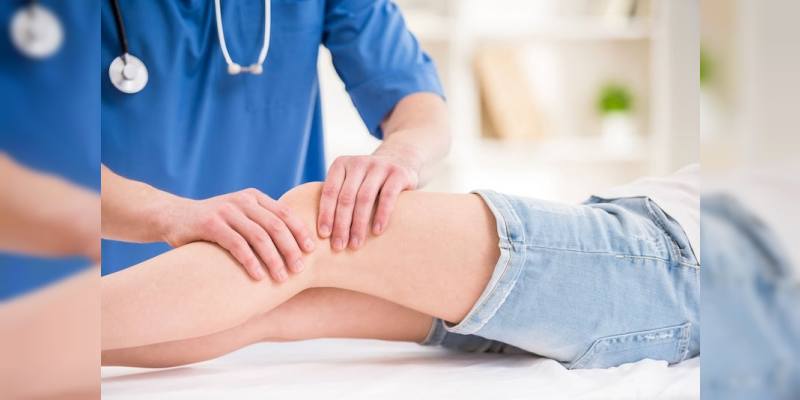Osteoarthritis is one of the most common joint disorders. The problem of this disorder is the abrasion in the cartilage. Cartilage wears and gets abraded due to advanced age and excessive weight. As it carries the whole load of the body, the knee is exposed to excessive strength; the total load carried by the knee is three times of total body weight. In addition to this, weight, misuse, trauma, insufficient muscle around the joint, environmental and genetic factors make osteoarthritis of knee inevitable.
The age and weight of the person have a significant part in osteoarthritis of the knee. With advanced age, wear in the tissues increases and joint lubrication and cartilage production decrease. As the load carried by the knee is high due to weight, risk of osteoarthritis increases. The most affected part of osteoarthritis is joint cartilage. As a result of the weakening in thinning of the cartilage, intraarticular narrowing occurs. Bones under the cartilage get weak and wear. As a result, mobility decreases and severe pain occurs. The patients have problem during kneeling, getting stairway, sitting on chair. Movements of the knee are restricted and shape deformation is observed.
What are the causes of Osteoarthritis of the Knee?
- The decrease in the strength of joint cartilage with advanced age
- Excess weight
- Muscle weakness
- Knee injuries
- Previous meniscus and anterior cruciate ligament ruptures wear caused by cartilage injuries
- Familial factors
What are the symptoms of Osteoarthritis of the Knee?
The first symptom of osteoarthritis of knee which is more likely to be observed with advanced age is pain. The pain increases according to the severity of the disease. After a long-term activity within the day, the pain is accompanied by swelling.
- In the knee suffering osteoarthritis, screeching noise or abrasion feeling is observed.
- When the knee is not moved for a long time, jamming occurs. (Especially in the morning.)
- Rarely, shape deformation may be seen.
The treatment method for osteoarthritis of the knee is determined by your physician after necessary examinations are performed. The suitable treatment method is determined according to severity of the disease. While non-surgical treatment such as physical medicine or drug treatment can be applied for young patients, patients with advanced age may require surgical treatment.
Non-Surgical Treatment of Osteoarthritis of Knee
Osteoarthritis of the knee which is not so severe can be treated with non-surgical methods. Also, patients who do not have severe osteoarthritis and do not complain about severe pain and difficulty in walking can be treated with non-surgical methods. Some of the non-surgical methods are applied by the patient herself/himself rather than the physician. These are life modifications. Life modifications include losing weight, strengthening the muscles around the knee and resting. In addition, there are very effective non-surgical methods such as PRP and stem cell therapy. Non-surgical treatment methods of osteoarthritis of the knee can be listed as follows:
- Decreasing the load carried by the knee by reducing body weight.
- Exercise regularly to strengthen the muscles and ligaments in the knee.
- Applying heat and cold treatment.
- Using supportive instruments such as walking stick, kneepad, and shoes with a soft footpad
- Resting
- Using pain-killer, anti-inflammatory drugs
- PRP treatment ( Platelet-rich plasma )
- Stem cell Treatment
For more information about PRP, you can read the PRP treatment article.
For more information about stem cell treatment, you can read the Stem cell treatment article.
Osteoarthritis of Knee Surgery (Knee Replacement Surgery)
The most applied surgery for osteoarthritis of the knee is knee replacement surgery. But, this is not the only surgery option. Some osteoarthritis can be treated with arthroscopic surgery. Especially for early-stage osteoarthritis, cartilage can be cleansed with knee arthroscopy and a long-term relief can be provided. However, in advanced cases, knee replacement may be required.
Knee replacement is carried out to create an artificial joint to the patient by covering the worn joint with special instruments produced with metal and polyethylene and designed for the movement of the joint.
Worn cartilage in the bones consisting of the knee joint is dissected and removed together with a thin bone layer. Afterward, prosthesis parts with suitable size are attached to prepared bones with a filler material. The surface of the joint is covered with pieces produced with metal and plastic. For more information, you can read knee replacement article.
What to pay attention to after Knee Replacement Surgery?
- After the surgery, the joint should not carry much load. For this purpose, walkers should be provided.
- The house should have a single floor, if it has multiple floors, needing of the patient should be fulfilled on the first floor.
- Corners of the carpet may be too dangerous. Carpets should be either removed or edges of the carpet should be attached with tape. Otherwise, the patient may fall at night and dangerous situations may occur.
- Physical medicine and rehabilitation instructions should be followed. A good recovery period is directly depending on a good physical treatment period.
- Medicines prescribed after the surgery should be used regularly.
- The patient should avoid knee-challenging movements such as jumping off.
- Regular exercise for a healthy body and joints may enable our metabolism to work actively and our joints keep fit. However, exercise should be done under physician control and with a professional trainer as any faulty movement may damage the knee joints.
- With knee exercises done with awareness, you can create a strong musculature and relieve the knees.
- Sports such as biking, swimming which do not force the knees are required for healthy knees.
- If you tend to knee disorders, you should have weight according to your body mass index.
- As carrying uncontrolled load may cause knee problems, you should avoid such movements.








